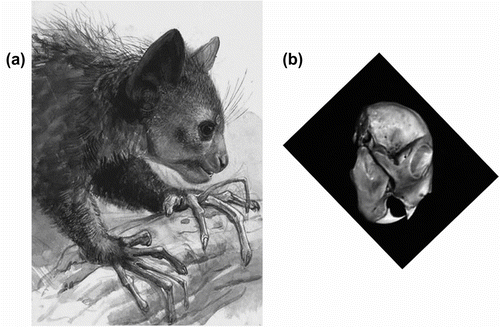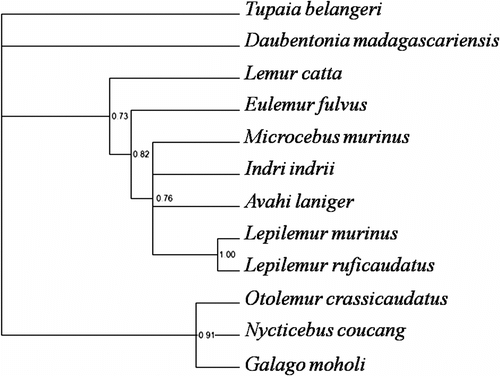Figures & data
Figure 1 (a) Daubentonia madagascariensis in a sketch from Jophen Wolf (1832–1899) and (b) a skull from the Frans Lanting photo collection (modified).

Figure 2 Strict consensus of the eight most parsimonious trees (tree length = 58, CI = 0.53, RI = 0.72) obtained from the maximum parsimony analysis. Numbers at the nodes indicate the statistical support values obtained from 1000 bootstrap replicates (only shown if > 50%).

Figure 3 Most likely phylogenetic reconstruction derived from the Bayesian analysis. Numbers adjacent to the nodes indicate estimated posterior probabilities.
